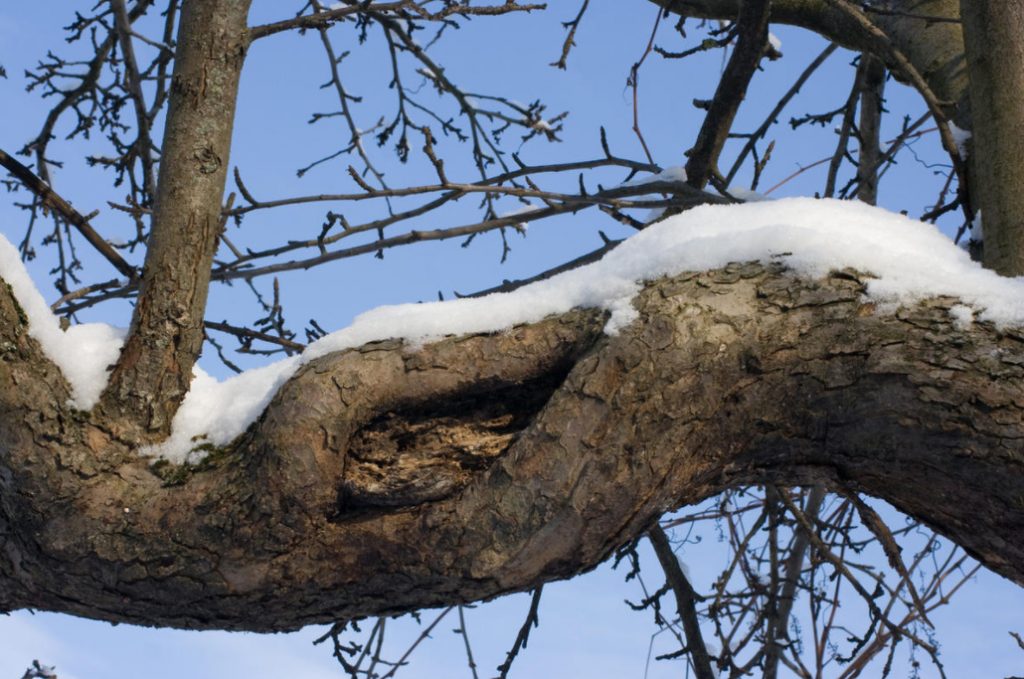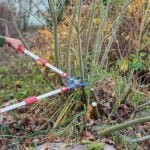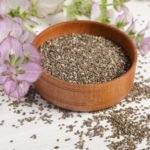Fruit trees in the garden often pose difficult tasks for us. One of the most difficult is the treatment of wounds formed on the trunk and skeletal branches. Let’s look at why they may occur, and what to do to help the tree.
Causes of hollows
Many people believe that hollows are formed only on old trees. For wildlife, this is partly true. As the wood ages, it may lose its flexibility, some branches stop functioning and break off, the trunk is damaged by neighboring trees during strong winds, and there are more chances to attract the attention of woodpeckers.

If we consider the natural forest, then there is a hollow tree — it’s even good. Such formations in trees are very popular in the wild: they give shelter to many birds and animals, so everything goes on as usual. But in a garden where Apple trees, cherries and other fruit crops are specially grown by the owner, a hollow tree is a serious problem that can destroy a valuable tree.
The main reasons for the appearance of hollows are mechanical disorders. This may be broken off large branches, rodent damage. In fruit orchards, another factor appears — the owner himself, who is not always able and experienced. As a result of improper pruning, such wounds remain that do not heal, but, on the contrary, provoke the formation of a hollow. Frostbites, sunburn, and even small cracks can be the beginning of a serious problem.

Sometimes the gardener finds that the tree is rotting from the inside. In “age-related” trees, this is often associated with natural aging, but the reason may be different. There are quite a few varieties of wood — destroying fungi (xylotrophs) that live in living wood and lead to its gradual destruction- rot. Often the process is invisible from the outside, and the appearance of a hollow in this case is already the last stage of the development of the disease.
What to do with the hollow tree
First of all, you need to say that the hollow does not appear suddenly. The process of its formation is quite long, and therefore the main thing is to pay attention to your garden. Regular inspection of trees and immediate response to any wound, crack or other damage is the main prevention of hollow tree formation. Signs of rot can be dry roadsides, swellings in the lower part of the trunk, fruit bodies of fungi, reduced growth.
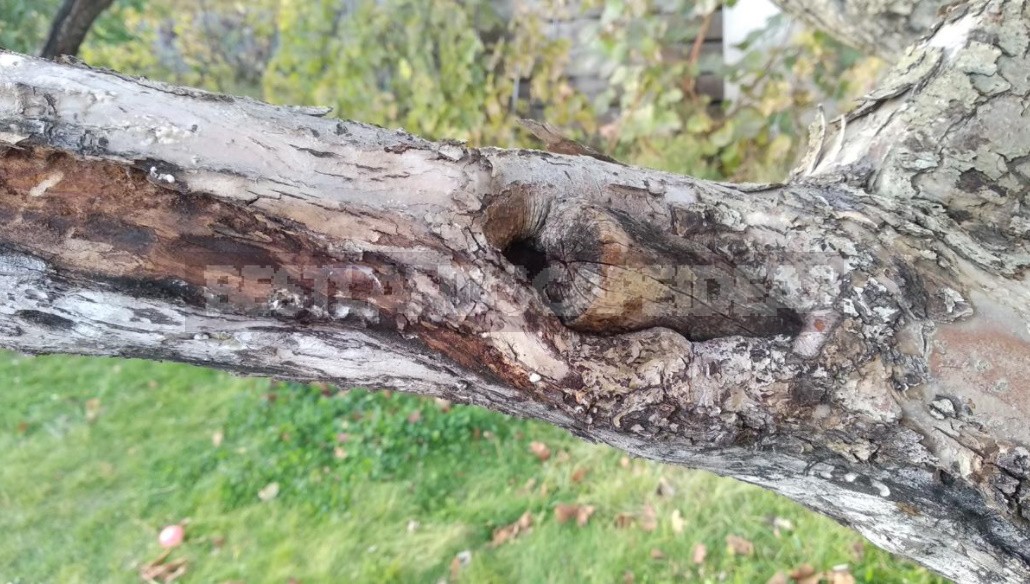
Of course, it’s easy to say — but it’s not always easy to do. Some get an old or abandoned garden at their disposal, where for years (or even decades) no one paid attention to the trees. Others would like to take better care of their Apple and pear trees, but life circumstances do not allow it. Therefore, it is better to consider ways to treat trees.
Wounds
The wound in the tree isn’t a hollow yet, and that’s good news in a way. If you find a damage, then you have a chance to prevent it from deepening, or even completely heal it. It is better to do this in the dry autumn, but before the onset of sub-zero temperatures.
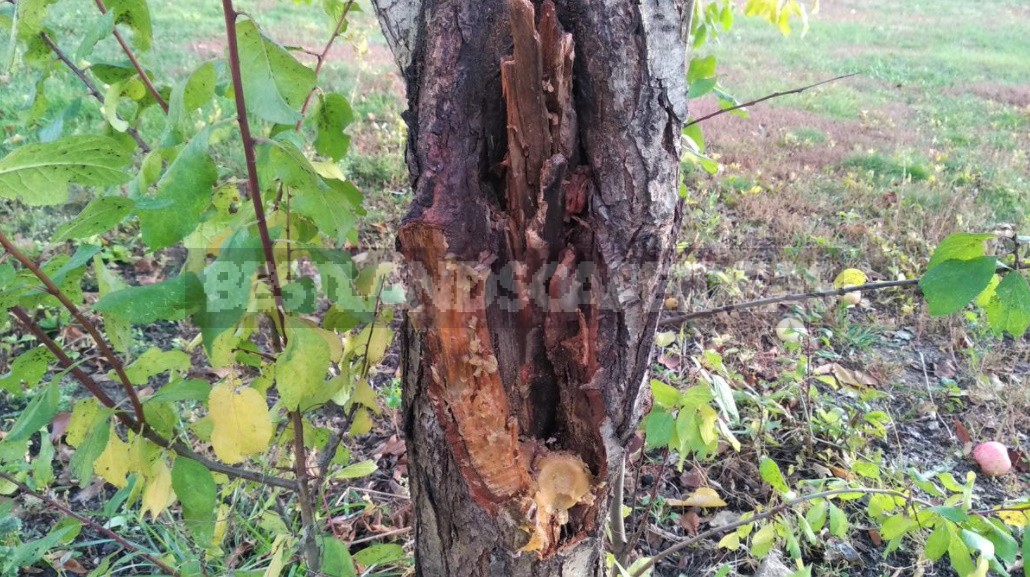
The first step is clearing. All dead, damaged or infected tissue should be removed to healthy wood and even a little deeper (1-2 mm). A rounded chisel is well suited for this purpose.
Next, we prepare a special putty. To do this, you will need:
- 3 liters of water,
- 150 g of copper sulfate,
- 5 liters of clay,
- 2.5 l garden lime,
- 2.5 l ash.
Copper sulfate acts as a disinfectant. We mix everything, as a result we get a porridge of sour cream density, we cover the wound with it.
Other treatment options are also possible, but all of them should include 3 stages: cleaning, disinfection, and protection. For example, after removing dead wood, you can treat the wound with a 5% solution of copper sulfate (or 10% solution of iron sulfate), dry it, cover it with clay and cover it with acrylic paint. Within a few years, the tree itself will tighten the sore spot, and to speed up the process, you can make shallow cuts on the floating ring with a sharp knife in the spring.
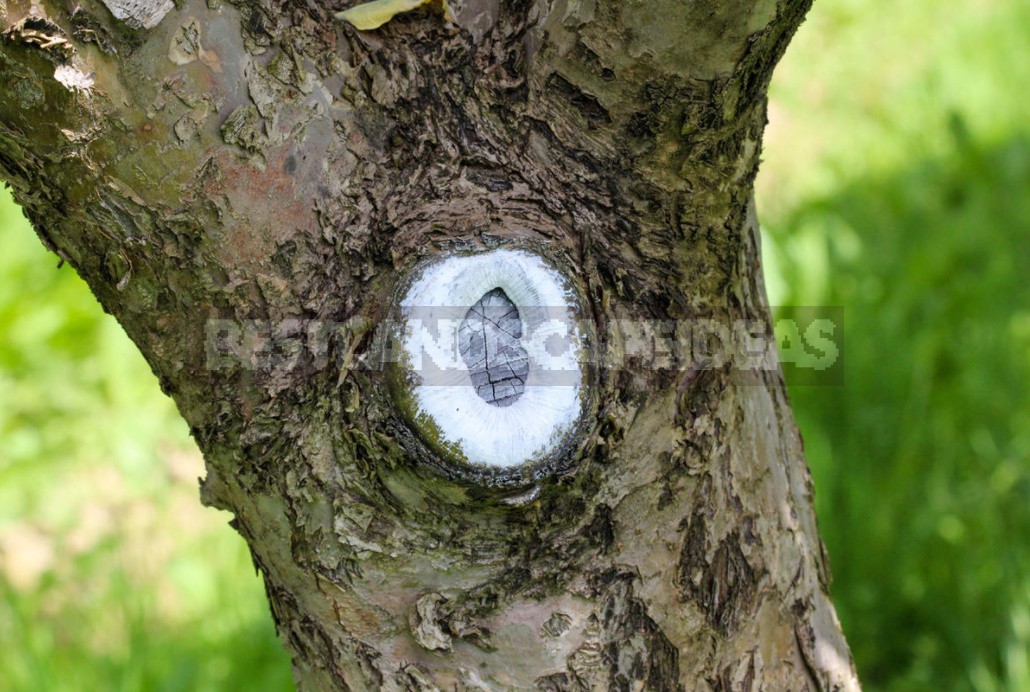
There is a forgotten remedy that has long been used to treat garden trees. It is necessary to collect sorrel leaves in the spring and grind them to a pulp. Apply as a compress to the wound with a layer about 1 cm thick — and cover the top with garden var. You can make a bandage instead of var and change the sorrel compress from time to time, rejoicing in the restoration of wood.
Hollows
If the wound is so deep that a partially hidden cavity has formed, then we are talking about a hollow tree. This is a more serious problem, the solution of which should not be delayed, so as not to lose the tree. The stages of treatment will essentially be the same as when working with wounds. First you need to try to clean the cavity to healthy wood — a chisel, a sharpened spoon, a manual metal brush or a similar drill attachment, etc. will do. Then you need to remove all small debris from the hollow, wipe and dry it.
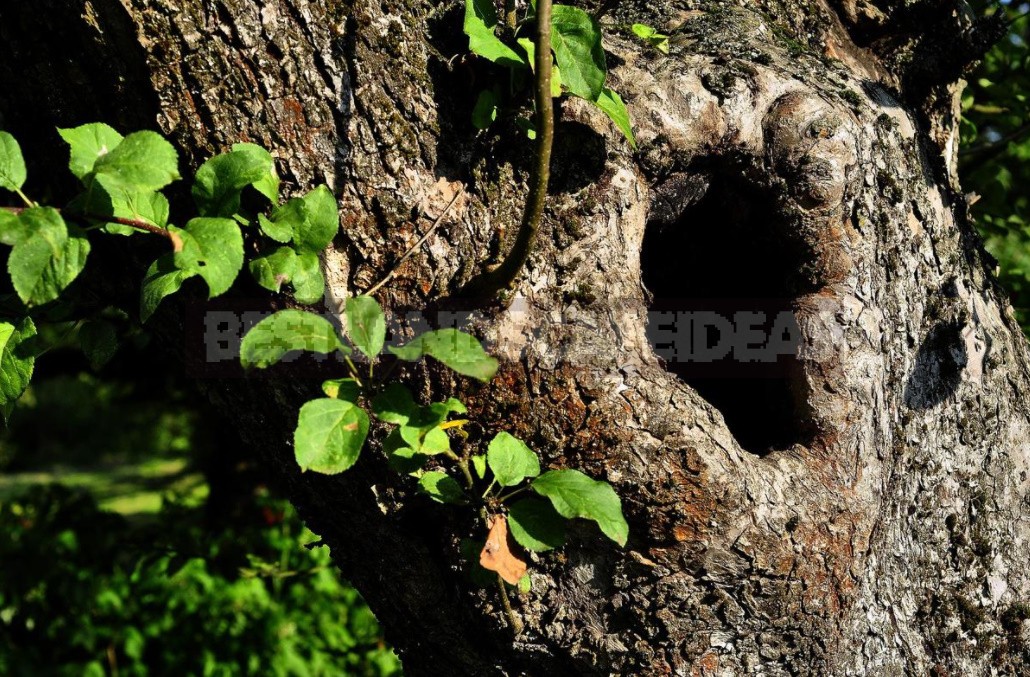
If the cavity has been infected with ants, then this pest should be destroyed before disinfection. To do this, the hollow must be treated with a special insecticide — preferably one that includes diazinone.
Now you need to decide on the composition of the seal. If the hollow is very small and round, you can use a wooden stopper to block it. It is easy to make it from a branch of a suitable diameter. The plug should fit snugly to the edges of the hole. Clog the cork and paint over the top.
For three-dimensional hollows, make a placeholder. This can be a thick cement mortar, which is prepared from cement, sand and lime in a ratio of 1:3:0.5. But much better shows itself in the case of modern frost-resistant tile glue. If the hollow is very large, then fill it gradually, first applying broken bricks, crushed stone, etc., pouring the solution and repeating the layers until filling. For large through or basal hollows, you may need some type of formwork to keep the solution from leaking out.
The seal in the hollow should dry thoroughly, and then it and the tree along the edges of the hollow should be covered with paint. This is done to protect the tree, so as not to let the filler get wet, and also to prevent moisture from entering through the places where the seal and the hollow come into contact.
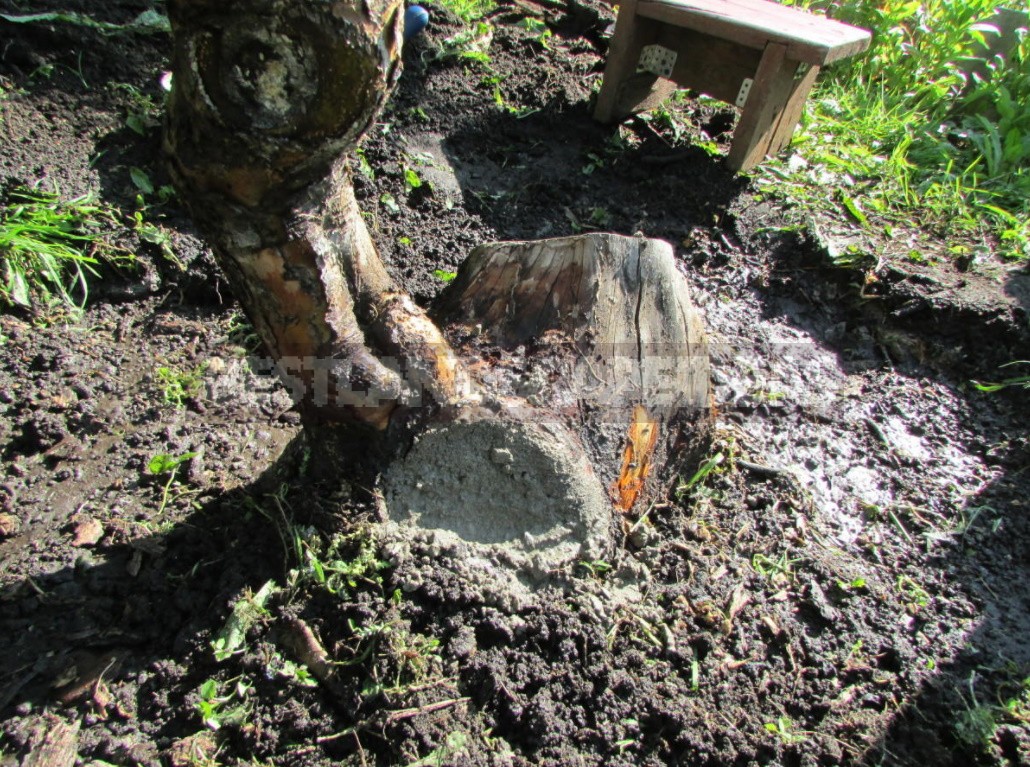
There is another modern tool that gardeners use for sealing holes — mounting foam. On the one hand, it turns out to be very practical: you take a spray can, a gun with a convenient nozzle — and you foam everything without missing a pass. At the same time, if the tree still has to be cut down, there will be no problems with the concrete stump. It is also easy to fill the hollow that goes up with foam: you do not need to make a cut to make a “classic” seal.
The Network has a lot of evidence of gardeners who do this and advise everyone. However, no one can reliably say or even suggest how the components of this building material will interact with the juices of a living tree. Therefore, you should first determine for yourself whether you agree with this unknown. If you have decided in favor of foam, then after filling the hollow and drying the material, the excess should be cut off, and then thoroughly paint the surface of the seal and the wood around it.
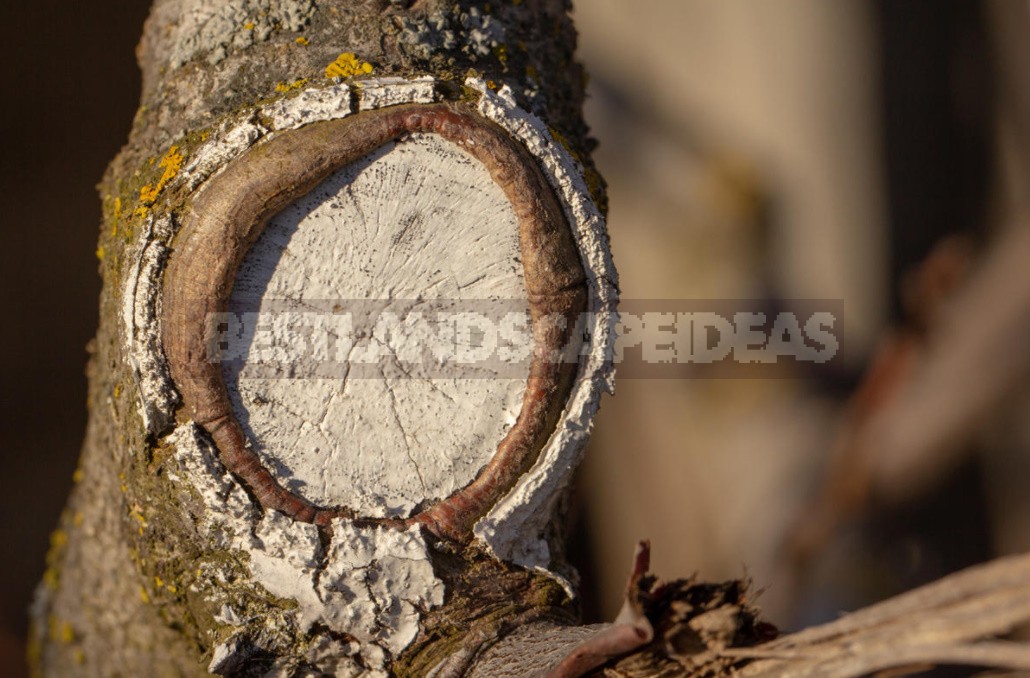
Sometimes there are situations that are worth looking at from the other side. On a tree with a hollow, especially if you clean it, often grows quite a lot of tops in the lower part of the trunk, while the growth of the upper branches is slowed down. You can use this situation to reshape a tree that is too tall. To do this, you need to leave a few grassroots tops — and grow young branches from them. Over the course of 3-4 years, you will gradually cut out the upper branches and eventually remove the entire trunk along with the hollow. As a result, your garden will have a tree that is easy to deal with.
How do you treat your fruit trees? Have you ever closed up large hollows? Share your experience in the comments, it will be very useful for other gardeners, especially beginners.
